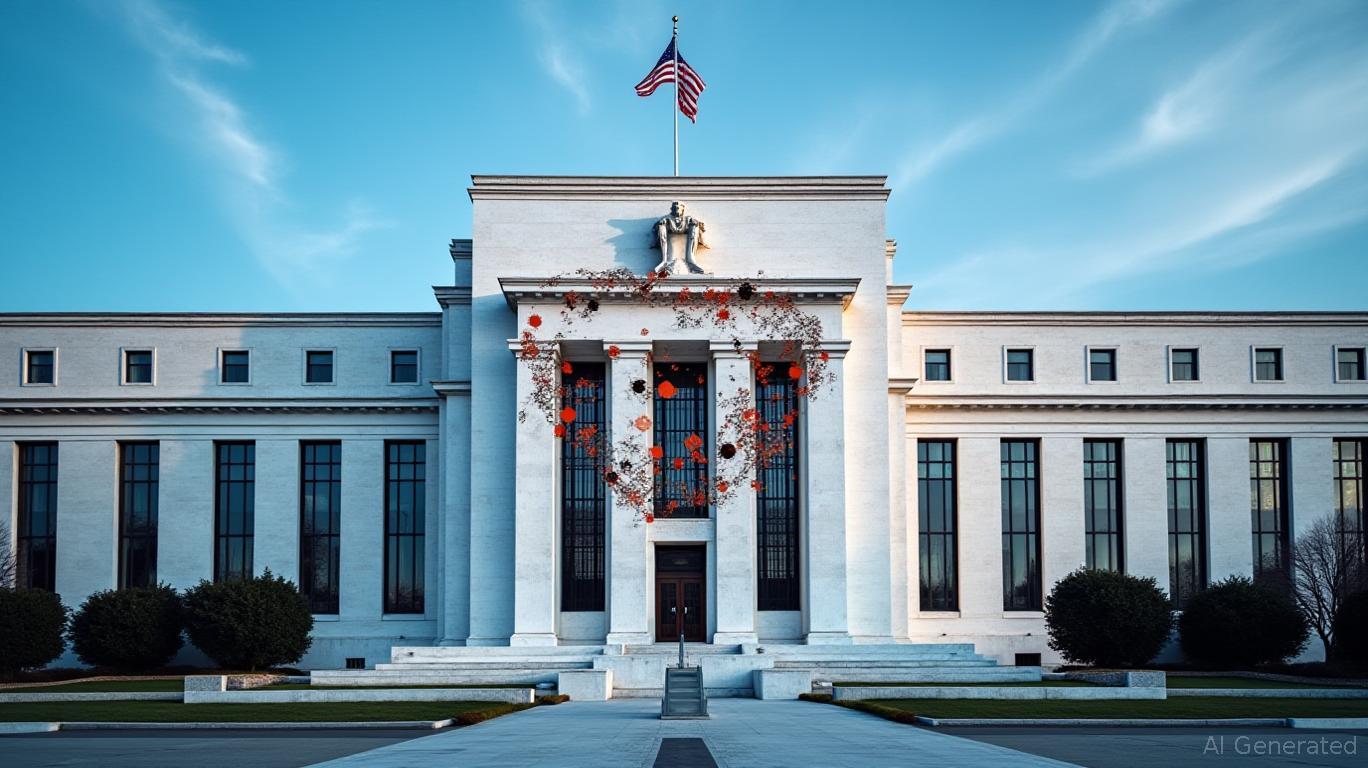Navigating Uncertainty: Fed's Wait-and-See Stance and the Tariff Crossroads
The Federal Reserve's decision to maintain its hawkish tone despite President Trump's calls for immediate rate cuts has set the stage for a pivotal tug-of-war between monetary policy and trade politics. With tariff-related inflation risks clouding the outlook, investors face a landscape where delayed rate reductions could prolong low yields, reshape sector dynamics, and amplify vulnerabilities in exposed industries.

The Fed's Delicate Balancing Act
The Fed's June 2025 policy statement underscored its reluctance to cut rates prematurely, citing tariff-driven inflation risks. While Chair Powell emphasized a “wait-and-see” approach, Trump's administration has doubled down on aggressive tariff hikes, including 25% levies on automobiles and critical minerals. This divergence reflects a broader conflict: the Fed seeks to anchor inflation expectations, while Trump's trade agenda risks destabilizing them.
The central bank's internal projections now suggest a median expectation of two 25-basis-point cuts by year-end, a slower pace than market pricing. . This disconnect highlights the Fed's caution in navigating tariff-induced volatility, where a misstep could either overstimulate inflation or stifle economic growth.
Inflation Expectations: The Critical Crossroads
Trump's tariffs have introduced a dual risk: near-term price spikes from import costs and long-term supply chain dislocations. Powell's testimony noted that while tariffs could push up inflation metrics, the Fed views many effects as one-time shifts rather than sustained trends. However, professional forecasters now expect a meaningful rise in year-over-year inflation by year-end, complicating the Fed's calculus.
For markets, this uncertainty creates a liquidity paradox. Delayed rate cuts will keep short-term yields anchored, benefiting rate-sensitive sectors like technology and real estate. Conversely, tariff-exposed industries—from automotive to semiconductors—face margin pressures as input costs rise.
Sector-Specific Implications: Winners and Losers in Q3 2025
The third quarter is a critical period for tariff deadlines, with major shifts hitting automotive, steel, and critical minerals.
Tech and Rate-Sensitive Sectors:
Companies reliant on low borrowing costs, such as cloud infrastructure firms (e.g., Microsoft) and REITs, stand to gain from prolonged low yields. . However, semiconductor manufacturers (e.g., ASML) face headwinds from 25% tariffs on Chinese imports, complicating global supply chains.Tariff-Exposed Industries:
, Tesla) face margin squeezes as tariffs on steel and non-USMCA parts rise. . Energy-intensive sectors like aluminum (e.g., Alcoa) and copper miners (e.g., Freeport-McMoRan) could see volatility tied to geopolitical energy shortages.
Automotive stocks (e.g.,
Bond Markets: Short Duration, Inflation Hedging
Fixed-income investors face a dilemma. Short-duration bonds (e.g., iShares Short Treasury Bond ETF) offer insulation against rate-cut delays, while inflation-linked securities (e.g., TIPS) gain appeal if tariffs fuel price pressures.
The Fed's reluctance to cut rates also supports high-yield corporate bonds, as defaults remain low. However, credit spreads could widen if tariff-driven earnings downgrades materialize in Q3.
Tactical Investment Strategies
- Rate-Sensitive Plays: Overweight technology and real estate, particularly firms with pricing power or diversified supply chains.
- Inflation Hedging: Allocate to commodities (e.g., COPX for copper miners) and energy infrastructure (e.g., NextEra Energy).
- Defensive Anchors: Utilities (e.g., NextEra) and healthcare (e.g., Johnson & Johnson) offer stability amid tariff-driven volatility.
- Tariff-Proof Tech: Focus on cloud and cybersecurity firms (e.g., CrowdStrike) less exposed to hardware tariffs.
Monitoring the Tariff Timeline
Key deadlines in Q3 2025 include:
- July 9: Reciprocal tariffs on most countries (except China) resume.
- August 12: China's tariff suspension ends, reinstating 34% levies.
- September 2025: Final reports on critical minerals and pharmaceutical tariffs.
Investors must remain agile, with a focus on companies that can pivot supply chains or benefit from reshoring trends (e.g., logistics firms like FedEx).
Conclusion: Navigating with Precision
The Fed's wait-and-see stance has prolonged a low-yield environment, favoring tech and real estate while penalizing tariff-exposed sectors. With inflation expectations and trade policy in flux, portfolios should blend rate-sensitive growth, inflation hedges, and defensive anchors. The coming months will test whether the Fed's caution or Trump's tariffs ultimately dominates the economic narrative—and investors must position accordingly.
.
The path forward is fraught with uncertainty, but informed investors can turn crosscurrents into opportunities.

Comments
No comments yet